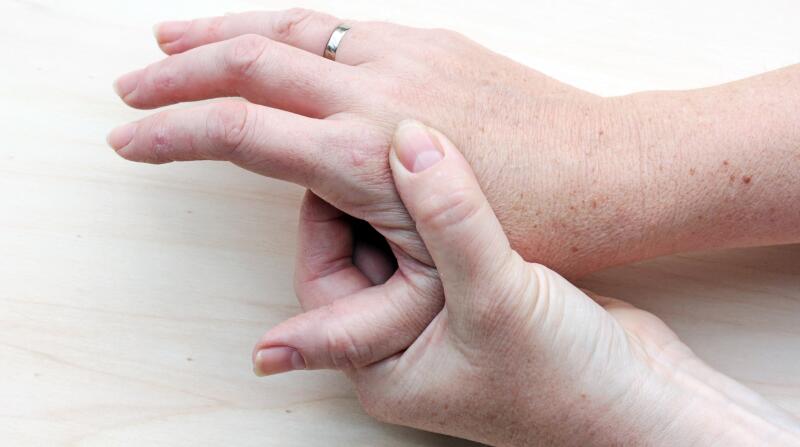7 Things to Know About Dupuytren's Contracture

Medically Reviewed By William C. Lloyd III, MD, FACS
Written By Chris Illiades, MD on August 15, 2021
-
 A Disease of the HandsDupuytren's contracture is named after Baron Gillaume Dupuytren, the first surgeon to operate on this hand deformity back in the early 1800s. If you have Dupuytren's contracture, the palm of your hand becomes gradually tighter and thicker. Eventually your fingers, especially your pinky and ring fingers, may curl inward. This can make it hard to use your hand, put on gloves, or even put your hand in your pocket.
A Disease of the HandsDupuytren's contracture is named after Baron Gillaume Dupuytren, the first surgeon to operate on this hand deformity back in the early 1800s. If you have Dupuytren's contracture, the palm of your hand becomes gradually tighter and thicker. Eventually your fingers, especially your pinky and ring fingers, may curl inward. This can make it hard to use your hand, put on gloves, or even put your hand in your pocket. -
 1. Who Gets Dupuytren'sDupuytren's contracture is fairly common in white people with ancestors from areas of northern Europe, such as Scandinavia. It is rare in people under age 40, but after age 40, it becomes more common as you get older. People who develop the disease at an earlier age may get a more severe form of it. Men have been reported to get Dupuytren's 5 to 15 times more often than women. However, one explanation for this finding is that women may simply not see their doctor for it because they tend to get a less severe form.
1. Who Gets Dupuytren'sDupuytren's contracture is fairly common in white people with ancestors from areas of northern Europe, such as Scandinavia. It is rare in people under age 40, but after age 40, it becomes more common as you get older. People who develop the disease at an earlier age may get a more severe form of it. Men have been reported to get Dupuytren's 5 to 15 times more often than women. However, one explanation for this finding is that women may simply not see their doctor for it because they tend to get a less severe form. -
-
 2. Symptoms of Dupuytren'sDupuytren's contracture is a thickening of the tissue, or fascia, beneath the skin of your palm. The most noticeable symptom of Dupuytren's is your fingers shrinking and pulling inward. Contraction starts slowly. The first symptom may be small, hard, tender lumps in your palm. Over time, these lumps will no longer be painful, and thick bands may start to form under the skin. Symptoms can range from just having the bumps in your palm to severe forms of the disease in which all your fingers curl into the palm of your hand. Dupuytren's may affect one or both hands.
2. Symptoms of Dupuytren'sDupuytren's contracture is a thickening of the tissue, or fascia, beneath the skin of your palm. The most noticeable symptom of Dupuytren's is your fingers shrinking and pulling inward. Contraction starts slowly. The first symptom may be small, hard, tender lumps in your palm. Over time, these lumps will no longer be painful, and thick bands may start to form under the skin. Symptoms can range from just having the bumps in your palm to severe forms of the disease in which all your fingers curl into the palm of your hand. Dupuytren's may affect one or both hands. -
 3. Cause of Dupuytren'sDoctors think a gene passed down through families may be responsible. Studies show that if you have a close relative with the disease, your risk of getting it is higher. People with diabetes are also at a higher risk. But the actual cause is not known. Dupuytren's contracture is not brought on by a hand injury or by overusing your hands. Some studies suggest that drinking alcohol and smoking could be linked to Dupuytren's.
3. Cause of Dupuytren'sDoctors think a gene passed down through families may be responsible. Studies show that if you have a close relative with the disease, your risk of getting it is higher. People with diabetes are also at a higher risk. But the actual cause is not known. Dupuytren's contracture is not brought on by a hand injury or by overusing your hands. Some studies suggest that drinking alcohol and smoking could be linked to Dupuytren's. -
 4. Diagnosing Dupuytren'sThere are no special X-rays or blood tests to diagnose Dupuytren's. Instead, your doctor will ask about your symptoms and examine your hands. One of the simplest tests is a table top test to see if you can flatten your hand, palm down, on at flat surface. Your doctor may also test your hand for areas of numbness and grip strength, record areas of nodules and bands, and measure how much your fingers are curled.
4. Diagnosing Dupuytren'sThere are no special X-rays or blood tests to diagnose Dupuytren's. Instead, your doctor will ask about your symptoms and examine your hands. One of the simplest tests is a table top test to see if you can flatten your hand, palm down, on at flat surface. Your doctor may also test your hand for areas of numbness and grip strength, record areas of nodules and bands, and measure how much your fingers are curled. -
 5. The Course of Dupuytren'sAlthough Dupuytren's contracture is not dangerous to your health and it usually progresses slowly, there is no way to stop it once it develops. Trying to stretch your hand and fingers does not help and may even speed up the contracture. Some people with a mild form of the disease won't even need treatment. However, if you have contracture that limits your ability to use one or both of your hands, you may be referred to a hand surgeon for treatment.
5. The Course of Dupuytren'sAlthough Dupuytren's contracture is not dangerous to your health and it usually progresses slowly, there is no way to stop it once it develops. Trying to stretch your hand and fingers does not help and may even speed up the contracture. Some people with a mild form of the disease won't even need treatment. However, if you have contracture that limits your ability to use one or both of your hands, you may be referred to a hand surgeon for treatment. -
-
 6. Treatment of Dupuytren'sTreatment does not cure the disease, but may improve symptoms. If you have severely limited use of your hand, a surgical procedure called fasciotomy may be performed to remove or divide the thickened tissue. Most people will see some improvement, but some amount of contraction comes back 20% of the time. Two new office procedures include an enzyme injection and needle aponeurotomy. Enzyme injection involves injecting a chemical into the palm of your hand to breakdown the thickened tissue. An aponeurotomy involves placing a needle through the skin to break up the thickening tissue.
6. Treatment of Dupuytren'sTreatment does not cure the disease, but may improve symptoms. If you have severely limited use of your hand, a surgical procedure called fasciotomy may be performed to remove or divide the thickened tissue. Most people will see some improvement, but some amount of contraction comes back 20% of the time. Two new office procedures include an enzyme injection and needle aponeurotomy. Enzyme injection involves injecting a chemical into the palm of your hand to breakdown the thickened tissue. An aponeurotomy involves placing a needle through the skin to break up the thickening tissue. -
 7. Living With Dupuytren'sMost people with mild disease can live with it fairly well. If you need surgery, you may need to wear a splint for a certain amount of time afterwards and have physical therapy to prevent scar tissue and strengthen your hand. Physical and occupational therapy may include heat, massage, and range of motion exercises. Some studies suggest that drinking alcohol and smoking could be linked to Dupuytren's. Not smoking is always a good idea, and ask your doctor if you should limit alcohol use.
7. Living With Dupuytren'sMost people with mild disease can live with it fairly well. If you need surgery, you may need to wear a splint for a certain amount of time afterwards and have physical therapy to prevent scar tissue and strengthen your hand. Physical and occupational therapy may include heat, massage, and range of motion exercises. Some studies suggest that drinking alcohol and smoking could be linked to Dupuytren's. Not smoking is always a good idea, and ask your doctor if you should limit alcohol use.
7 Things to Know About Dupuytren's Contracture
















